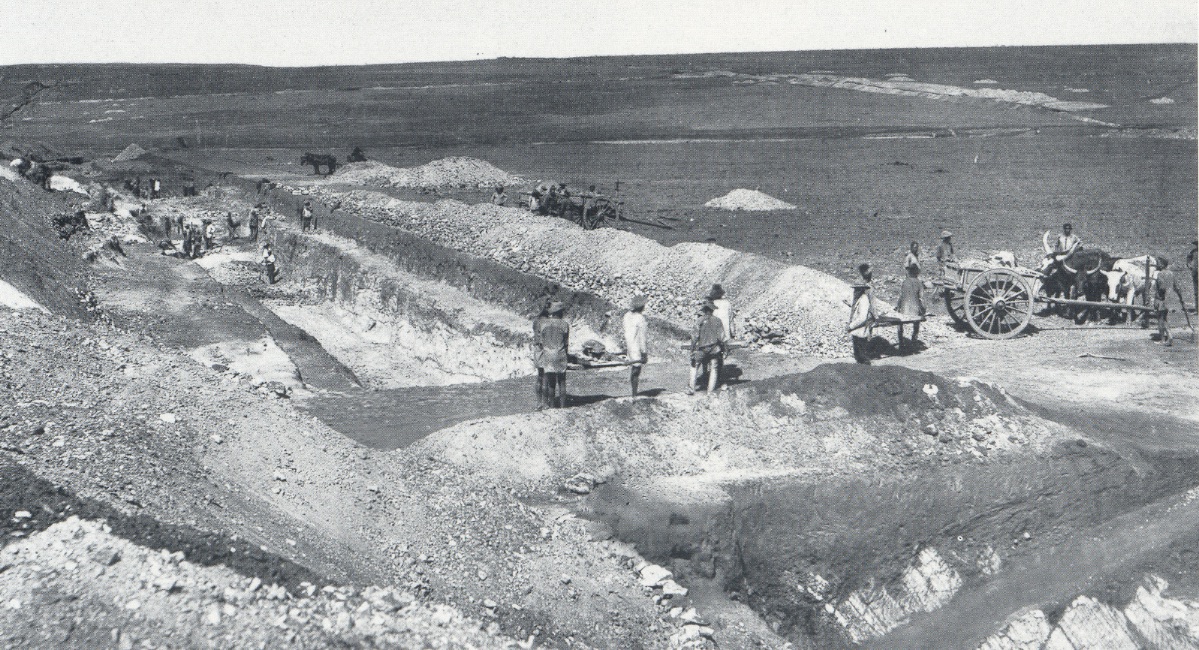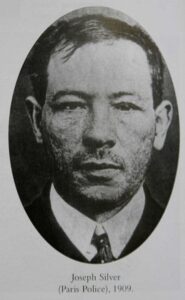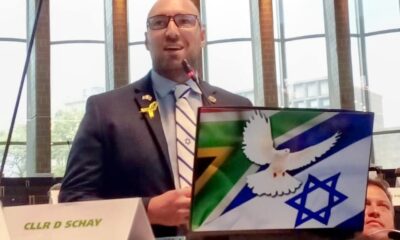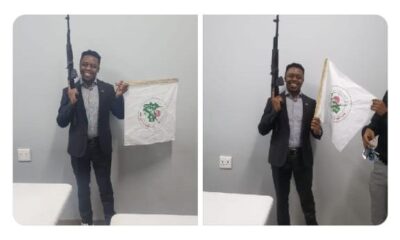
Featured Item

Jewish pimps, prostitutes, and the gold rush
From the late 1800s, young Jewish women and their families were deceptively lured by members of organised Jewish crime gangs in Russia and Eastern Europe who promised them a better life across the ocean. Instead, they were systematically raped and groomed for life in brothels in Argentina, Asia, and South Africa.
Until the late 1800s, there were relatively few Jewish prostitutes. However, a series of social, economic, and religious changes in this era set the stage for a new reality.
In the second half of the nineteenth century, prostitution in Europe and its international trade grew enormously, and this came about for many reasons, including, the industrial revolution, which resulted in women entering the workforce en masse in terrible conditions, causing social upheaval.
At the same time, there was extensive migration from villages to cities, which caused difficulties in adapting and a loss of direction, especially for vulnerable women who had no status. For example, those whose husbands died without witnesses or went missing without leaving a get (Jewish writ of divorce); or those whose husbands travelled alone to try their luck in America, and “forgot” to send their wives any sign of life.
In addition, the migration of men from Europe to the New World created concentrations of all-male settlements which led to an increased demand for prostitutes in those locations.
Four centuries of persecution and discrimination against Jews in Europe restricted their economic opportunities, land ownership, and residence rights. Pogroms in Russia, Belarus, Ukraine, and Poland further exacerbated their plight. Poverty was pervasive among Eastern European Jews, with the majority living in dire conditions, and this poverty is the most compelling reason why Jews migrated out of Eastern Europe and Russia.
The traffickers preyed on these vulnerabilities of Jewish families and women. They used various scam tactics, including deceptive job advertisements, immigration certificates, and marriage proposals to lure women. The traffickers understood Jewish customs and traditions, exploiting the innocence of young Jewish girls. “Stille chuppah” or secret religious wedding ceremonies, which meant there were no civil marriage rights, were used to bring women into prostitution.
The victims, ranging from early teens to early thirties, suffered sexual assault, physical abuse, imprisonment, starvation, and torture. By the time they arrived at their destinations, they were broken.
Jews played a historically unprecedented and not insignificant role in what was known as “white slavery” – commercial prostitution – between 1880 and 1939.
Arthur Moro, an officer in the leading anti-white-slavery group, London’s Jewish Association for the Protection of Girls and Women, sketched both the geographical and political dimensions of the problem in 1903.
“We have positive evidence that to almost all parts of north and South Africa, to India, China, Japan, Philippine Islands, North and South America, and also to many of the countries in Europe, Yiddish speaking Jews are maintaining a regular flow of Jewesses, trafficked solely for the purpose of prostitution. We know that they were taken to brothels owned by Yiddish speaking Jews. We fear unfortunately this horrible blot on the reputation of our race exists in most places of the world where there’s the chance of these unscrupulous men and women making money by the sacrifice of young Jewish girls.”
Jewish involvement wasn’t exclusive. There were many other groups involved in international trafficking, and to put the story in context, there were more French prostitutes in Paris than Jewish prostitutes throughout the world, however Jews dominated the trafficking of Eastern European Jewish women.
The Jewish community grappled with the issue, torn between raising awareness to rescue victims and fearing antisemitic repercussions. Bertha Pappenheim, the German-Jewish feminist, pinpointed the political problem. “If we admit the existence of this traffic, our enemies decry us; if we deny it, they say we’re trying to conceal it.” Some Jewish communities reacted with spontaneous violence against pimps and prostitutes, while others ostracised both pimps and prostitutes to the extent that in Buenos Aires and other places, they had their own cemeteries, shuls, and welfare societies.
The fight against white slavery was a central social issue of the time, and Jewish philanthropists and social workers played a pivotal role in the interdenominational anti-trafficking movement using their connections, energy, and resources to ensure the movement spread. Jewish organisations worldwide promoted committees against white slavery and set up structures to rescue women arriving at ports, particularly in America.
The story of Jewish prostitutes in South Africa during the late 19th and early 20th centuries was dominated by Joseph Silver, a cunning Jewish trafficker born in Poland who had a long history of involvement in the trade. Silver had in the past trafficked women to the United States and even worked as an agent for a crime-prevention society but eventually migrated to England in 1895. There, he organised a gang responsible for recruiting girls and women from the East End’s rag trade for prostitution. However, in 1898, his notorious Stamford gang was facing increasing pressure from law enforcement and the Jewish Association, and it decided to relocate its operations to South Africa. Silver took 15 traffickers and 20 to 25 young girls, most of whom had already been forced into prostitution in London, with him.

South Africa at the time had a booming frontier created by the discovery of gold on the Rand in 1886. The influx of workers and adventurers led to a significant gender imbalance, with a high ratio of men to women in Johannesburg.
Silver’s party arrived in Cape Town, but quickly moved to Johannesburg, where they reunited with acquaintances from New York who had also ventured to the Rand.
In Johannesburg, the vice scene was dominated by various groups, including the “Bowery Boys”, a term referring to pioneers from New York who controlled the Frenchfontein vice district with an iron grip, enforcing their control over prostitution and gambling. The city was home to a diverse array of pimps, including East European, French, German, and others.
The situation was further exacerbated by the arrival of Franco-American traffickers and others from Paris. This mixture of French and Jewish participation in the trade mirrored similar patterns in Buenos Aires.
Joseph Silver eventually consolidated his influence by forming the American Club, which later evolved into the Immorality Trust. This organisation allowed Silver to make decisions regarding the organisation of brothels, recruitment of women in Europe, and dealings with the police. However, the tight grip he had on the organisation eventually led to its instability, as some members broke away.
The turning point came in 1908, when a mass revolt of prostitutes occurred, marking an unprecedented event where the exploited stood up against their exploiters. Economic depression on the Rand and increased demands from the Immorality Trust probably fuelled this rebellion. The authorities in Johannesburg used the testimony of more than 100 prostitutes to dismantle the Immorality Trust, ultimately deporting hundreds of pimps back to Europe and America.
The decline of the trafficking trade in South Africa can be attributed to changing legal landscapes, public exposure, and the revolt by exploited women.
“The best medicine for the crimes of the past is to cast the brightest light upon them; and once these crimes are beyond the reach of punishment, this illumination is the truest redemption, the only one that counts,” wrote Simon Sebag Montifiore in The World: A Family History.
- This article was primarily informed by the work of historians Edward Bristow and Charles van Onselen, and is a summary of a talk presented by Karen Kallmann at Limmud Johannesburg in August.











Gary
July 22, 2024 at 8:41 pm
Very sad that this had to happen to these women and girls.